This article was medically reviewed by Luba Lee, FNP-BC, MS and by wikiHow staff writer, Christopher M. Osborne, PhD. Luba Lee, FNP-BC is a Board-Certified Family Nurse Practitioner (FNP) and educator in Tennessee with over a decade of clinical experience. Luba has certifications in Pediatric Advanced Life Support (PALS), Emergency Medicine, Advanced Cardiac Life Support (ACLS), Team Building, and Critical Care Nursing. She received her Master of Science in Nursing (MSN) from the University of Tennessee in 2006.
There are 13 references cited in this article, which can be found at the bottom of the page.
This article has been viewed 86,186 times.
Oxygen saturation (Sa0₂) relates to the circulation of oxygen through your bloodstream, with recorded levels above 95% typically considered healthy and levels below 90% typically considered problematic. People with medical conditions like chronic obstructive pulmonary disease (COPD) often have reduced oxygen saturation levels, which can lead to shortness of breath, lethargy, tiredness, weakness, and a host of more serious problems. Medical intervention, such as the use of supplemental oxygen, is the best way to deal with chronically low oxygen saturation, but there are some things you can do on your own to improve your levels.
Steps
Changing Your Breathing Patterns
-
1Breathe more slowly and deeply. You breathe involuntarily, but you also probably breathe inefficiently — many adults use only about one-third of their lung capacity while breathing. This inefficiency can cause less oxygen to enter the lungs and thereby the bloodstream, in turn reducing your oxygen saturation. By breathing more slowly and deeply, you can improve all of these elements.
- Many adults breathe at a rate of around 15 respirations per minute; reducing this to rate to 10 per minute has been shown to benefit oxygen saturation.
- Make sure to breathe in through your nose and then pause for a few seconds after each breath. Stay as relaxed as possible while you are breathing. This is also known as the Buteyko method and it may help to increase your oxygen saturation.[1]
-
2Seek respiratory training for maximum health benefits. While occasionally making the conscious effort to breathe more slowly and deeply benefits your oxygen saturation, making more lasting adjustments to your breathing patterns will produce superior results. Both healthy individuals and those with breathing-related medical conditions can increase their oxygen saturation through respiratory training.[2]
- Especially if you have a medical condition like COPD, talk to your health care team about including respiratory training.
- You can also seek out guided breathing training outside of a medical setting, in ways like joining a yoga class or being instructed in diaphragmatic breathing (either by a respiratory trainer or a vocal coach).[3]
Advertisement -
3Try coughing. Controlled coughing can help you to clear the secretions that may be obstructing your airway and this will help to improve your oxygen saturation. This is a common instruction after surgery to ensure that your airways are clear.
- Try coughing a few times to see if this help you to breathe a little easier.
-
4Practice pursed-lips breathing. Throughout your day, you can temporarily increase your oxygen saturation by doing a simple breathing exercise known as pursed-lips breathing. It is one of the easiest ways to more slowly and deeply draw oxygen into your lungs. Try the following steps:[4]
- Breathe in through your nose for about two seconds.
- Pucker your lips (as if giving a kiss) and hold the breath in for a beat.
- Exhale through your pursed lips for about six seconds.
- Repeat as many times as desired.
Using Medical Interventions
-
1Use supplemental oxygen as prescribed. If you have consistently low oxygen saturation levels due to a condition like COPD, your doctor may decide to place you on supplemental oxygen. This treatment involves the use of oxygen tanks, flexible tubing, and a cannula that feeds the oxygen into your nose. Patients who follow their prescribed oxygen regimens can often lead long and reasonably active lives.[5]
- Don’t resist this treatment because you’re worried you’ll be “chained” to an oxygen tank and stuck in bed for life. Portable tanks can be very unobtrusive and allow you to go out and about with more energy and endurance.
-
2Learn to check your oxygen saturation and supplementation regularly. People on supplemental oxygen will usually be taught how to monitor their own oxygen saturation by placing a pulse oximeter on their finger, earlobe, or nose. The process is quick, easy, non-invasive, and painless.
- As per your doctor’s recommendations, you can adjust your supplemental oxygen to compensate for lower saturation readings, or when you are engaging in activities like walking or light exercise.
-
3Take any prescribed medications as directed. If you have low oxygen saturation due to COPD or a similar condition, you will likely take medications along with using supplemental oxygen. These may include controller medications that you will take on a regular schedule to improve your breathing and lung function, as well as rescue medications to use when you’re having more acute breathing difficulties.[6]
- There are numerous types of inhaled corticosteroids (ICS), short- and long-acting beta-2 agonists (SABA & LABA), and other medications that may be prescribed to you. Make sure you understand your doctor’s instructions for using them, and follow the plan diligently.
- These medications are also known as bronchodilators. Bronchodilators increase the diameter of your airways and this helps to increase oxygenation.
-
4Ask your doctor about using a continuous positive airway pressure (CPAP) machine. If you have obstructive sleep apnea (OSA), then your airways might not stay open on their own. This may lead to decreased oxygen saturation. Ask your doctor about getting a PAP or BiPap machine to help keep your airways open and raise your oxygen saturation.[7]
- The machine comes with a hose and a mask that you wear over your mouth and nose.
-
5Keep an eye out for emerging treatments. While supplemental oxygen, medication, and respiratory training has been — and continues to be — the common and often effective treatment plan for low oxygen saturation, new options continue to be developed. One example is stem cell treatment, in which stem cells are harvested from your blood or bone marrow, isolated, and reintroduced to your lungs.[8]
- New treatments can also carry new risks, of course, or turn out not to be as effective as initially hoped. Do some research on your own to find out what options are out there, and work with your medical team to determine the treatment plan that is right for you.
Making Lifestyle Changes
-
1Quit smoking and avoid secondhand smoke. Breathing in smoke from tobacco products seriously damages your lungs and inhibits their ability to efficiently introduce oxygen to your bloodstream. If you smoke and have low oxygen saturation levels, quitting is the first and perhaps most vital step you can take to deal with the condition. Seek out whatever help you need to quit.[9]
- If you are on supplemental oxygen, smoking is also a severe fire hazard. Concentrated oxygen is extremely flammable, and many people have been seriously or even fatally burned as a result of smoking while using supplemental oxygen.
-
2Breathe fresher air. Oxygen levels in the surrounding atmosphere have an impact on your oxygen saturation; people who live in higher elevations typically have lower saturation levels, for example. The more oxygen and less “other stuff” — like dust, particulates, smoke, and so on — that circulates in the air you breathe, the better for your oxygen saturation.[10]
- If you live in an area with fresh air, open a window or go outside. Keep plants in the house to boost oxygen levels. Clean and dust regularly. Invest in air cleaners if desired.
- Don’t expect major increases in oxygen saturation this way; use it in coordination with other changes.
-
3Lose excess weight if needed. If you have a body mass index (BMI) that is above recommended levels, the excess weight you carry likely causes you to breathe with more difficulty and less efficiency. Lower BMI levels have been shown to correlate with higher oxygen saturation levels.[11]
- Also, even if your oxygen saturation were to remain the same, losing weight makes it easier for you to utilize the oxygen in your body. Compare it to how an unloaded car uses fuel more efficiently.[12]
-
4Exercise sensibly. Aerobic exercise in itself does not necessarily increase oxygen saturation, but it will increase your ability to utilize the oxygen you do have more efficiently. Exercise that helps you lose excess weight is more likely to have a positive impact on actual oxygen saturation levels.[13]
- If you have COPD or another condition that impacts your pulmonary or cardiovascular health, you will have restrictions to your exercise choices. Work with your medical team to develop a realistic and effective plan for you.
-
5Consume more water. You might recall from chemistry class that a water molecule contains two hydrogen atoms and one oxygen atom. So, every time you drink water or eat water-rich foods, you are introducing oxygen into your body. Gulping down water won’t magically fix your problem of low oxygen saturation, but regular hydration is a sensible part of any plan for someone with low levels.
- Plain water is the best choice for hydration, while fruits and vegetables are water-rich and healthy food choices. Try, for instance, steamed spinach, carrots, or green beans, or freshly-made fruit juices and smoothies.
- Drinking water can help to loosen up the mucus in your airways. This will help them to stay open and provide the maximum oxygen access.
-
6Try sitting up instead of lying down. You can cause a slight but demonstrable increase in your oxygen saturation simply by choosing to sit instead of lie down. When you’re resting or relaxing, sitting up may make it easier for you to breathe in deeply and increase your oxygen saturation. Don’t use this as an excuse not to get up and be active, however, as improving your overall fitness will provide a greater, lasting benefit.[14]
- You can also alter your position to improve your ability to breathe and increase oxygen saturation. This is a non-invasive way to improve your oxygen saturation. For example, if you are laying down, elevate the head of your bed to at least 30 degrees. If you elevate the head of your bed to 45 to 60 degrees, then this may improve your oxygen saturation even more.
-
7Accept the inevitable variations in oxygen saturation levels. While an oxygen saturation level above 95% is usually considered good and below 90% is often considered problematic, every individual is different. Oxygen saturation levels will vary from person-to-person based on many factors — levels tend to peak around mid-childhood and slowly decline thereafter, for instance. Don’t get fixated on a specific number; instead, work with your doctor to find the range that suits your overall health best.[15]
References
- ↑ https://www.ncbi.nlm.nih.gov/pmc/articles/PMC3612953/
- ↑ http://thelancet.com/journals/lancet/article/PIIS0140673697103415/abstract
- ↑ http://www.copdfoundation.org/What-is-COPD/Living-with-COPD/Breathing-Techniques.aspx
- ↑ http://www.copdfoundation.org/What-is-COPD/Living-with-COPD/Breathing-Techniques.aspx
- ↑ https://www.ucsfhealth.org/education/supplemental_oxygen/the_need_for_supplemental_oxygen/
- ↑ http://www.copdfoundation.org/What-is-COPD/Living-with-COPD/Medications.aspx
- ↑ https://www.nhlbi.nih.gov/health/cpap
- ↑ https://www.lung.org/lung-health-diseases/wellness/public-health-issues-lung-health/stem-cell-therapy
- ↑ https://my.clevelandclinic.org/health/diagnostics/22447-blood-oxygen-level
- ↑ https://my.clevelandclinic.org/health/diagnostics/22447-blood-oxygen-level
- ↑ https://www.nhlbi.nih.gov/health/obesity-hypoventilation-syndrome
- ↑ https://www.drweil.com/health-wellness/body-mind-spirit/disease-disorders/oxygen-level-too-low/
- ↑ https://www.copdfoundation.org/COPD360social/Community/Blog/Article/585/Will-Exercise-Improve-My-O2-Saturation.aspx
- ↑ https://onlinelibrary.wiley.com/doi/epdf/10.1111/jocn.13189?purchase_site_license=LICENSE_DENIED_NO_CUSTOMER&show_checkout=1&r3_referer=wol&tracking_action=preview_click
- ↑ https://www.ncbi.nlm.nih.gov/pubmed/11258584
About This Article
If you have a chronic medical condition, you may have lower oxygen saturation in your bloodstream, but you can help increase it by changing your breathing patterns. Whenever you can, focus on breathing slowly and deeply. This works best if you breathe in through your nose, pause for a few seconds, then slowly breathe back out. If your airways aren’t totally clear, try coughing to clear them and help you breathe easier. To temporarily increase your oxygen saturation, try the pursed-lips breathing technique. Breathe in through your nose for 2 seconds, pucker your lips, hold the breath for a second or 2, then exhale through your pursed lips for 6 seconds. You can do this as many times as you like. To learn more about medical interventions that can help your oxygen levels, read more from our Medical co-author.




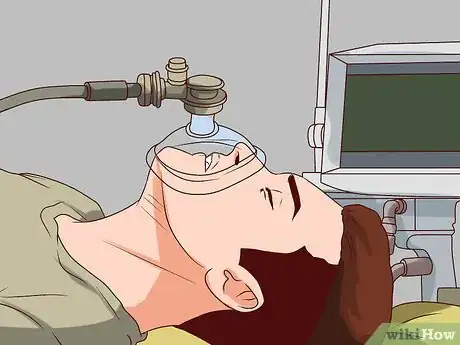
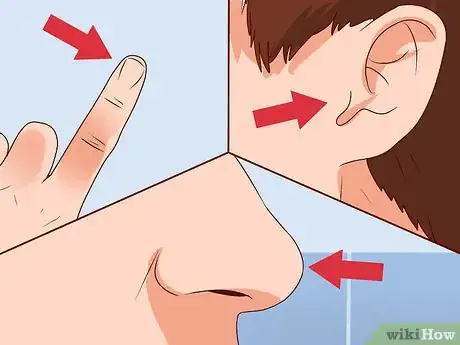
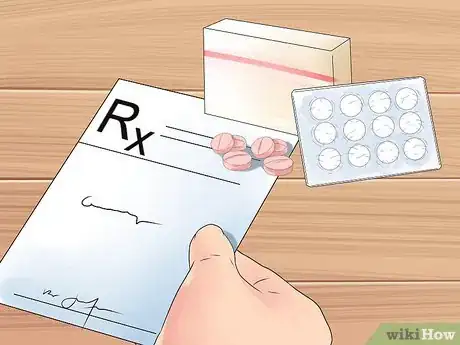

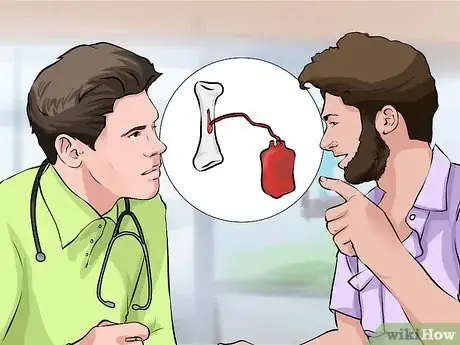
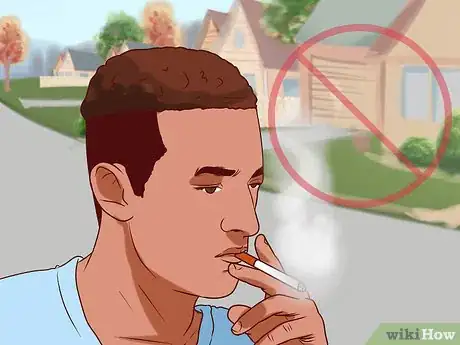

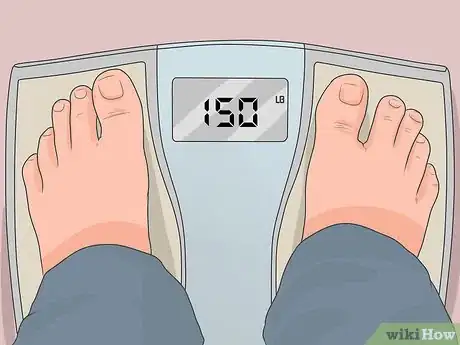

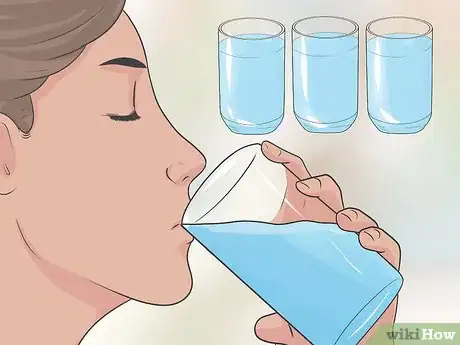








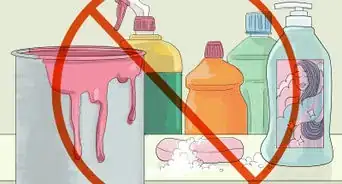
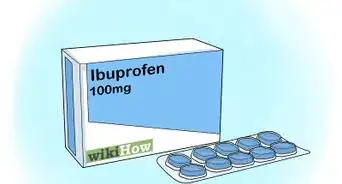





















































Medical Disclaimer
The content of this article is not intended to be a substitute for professional medical advice, examination, diagnosis, or treatment. You should always contact your doctor or other qualified healthcare professional before starting, changing, or stopping any kind of health treatment.
Read More...